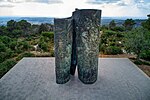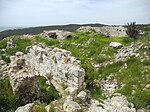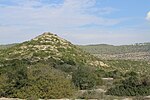Dayr al-Hawa
Arab villages depopulated during the 1948 Arab–Israeli WarDistrict of JerusalemPages with non-numeric formatnum arguments

Dayr al-Hawa (Arabic: دير الهوا) was a Palestinian Arab village in the Jerusalem Subdistrict. The village was depopulated during the 1948 Arab-Israeli War on October 19, 1948, by the Fourth Battalion of the Har'el Brigade of Operation ha-Har. It was located 18.5 km west of Jerusalem.
Excerpt from the Wikipedia article Dayr al-Hawa (License: CC BY-SA 3.0, Authors, Images).Dayr al-Hawa
3866, Mate Yehuda Regional Council
Geographical coordinates (GPS) Address Nearby Places Show on map
Geographical coordinates (GPS)
| Latitude | Longitude |
|---|---|
| N 31.751388888889 ° | E 35.037222222222 ° |
Address
3866
9901312 Mate Yehuda Regional Council
Jerusalem District, Israel
Open on Google Maps










